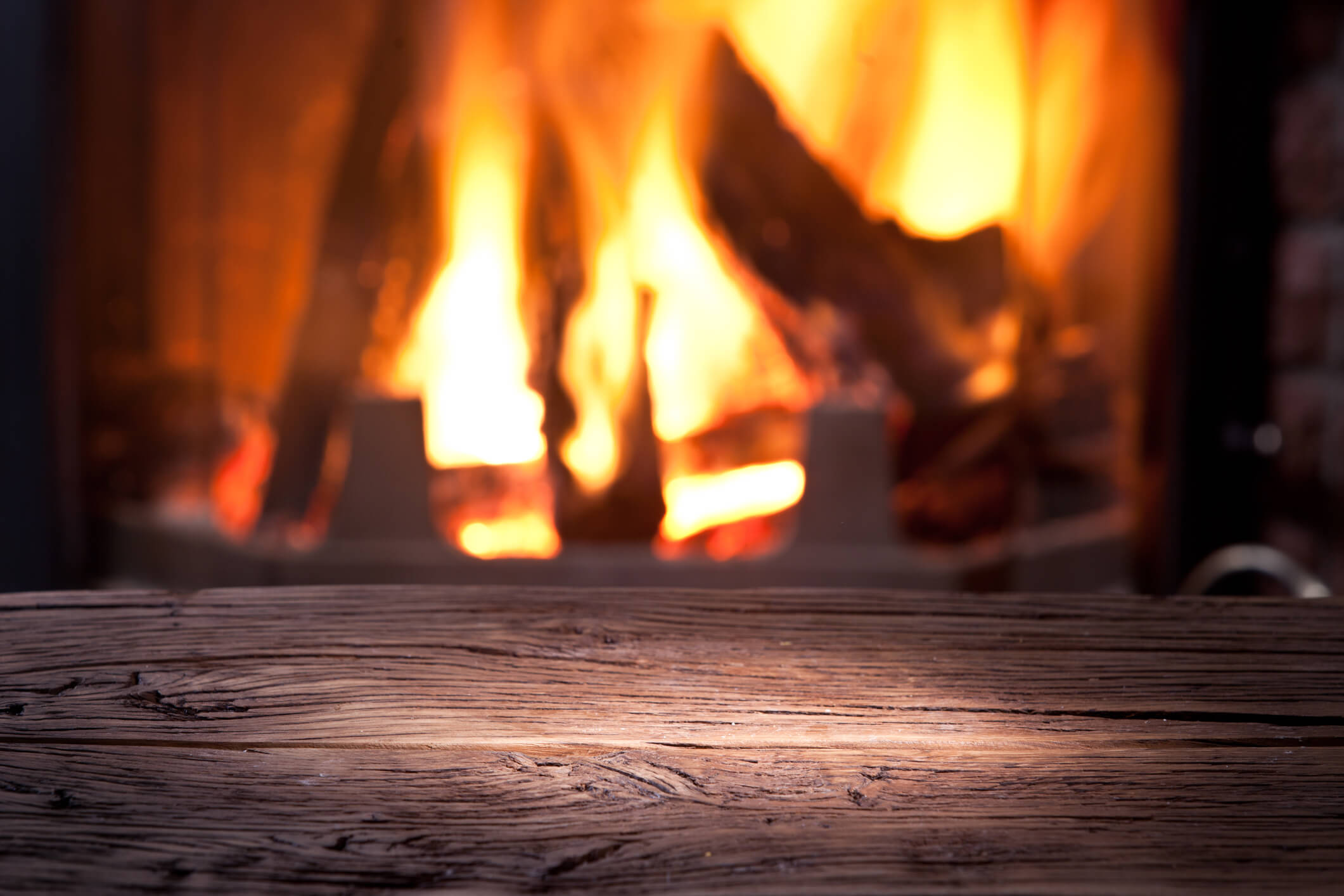Gas fires have long been a popular choice for homeowners in the UK. They offer warmth, ambiance, and a certain charm that’s hard to beat. However, many people have questions and concerns when it comes to using gas fires in their homes. In this blog, we’ll address some of the most common gas fire FAQs and provide you with all the answers you need to make an informed decision.
1. Is A Gas Fire Safe For Your Home?
Safety is a paramount concern when it comes to gas fires. The good news is that when installed and maintained correctly, gas fires are indeed safe for your home. Here are some key points to consider:
- Regular Maintenance: Gas fires should be serviced and maintained by a Gas Safe registered engineer at least once a year. This ensures that any potential issues are spotted and addressed promptly.
- Carbon Monoxide (CO) Alarms: Install carbon monoxide alarms in your home, especially in rooms with gas appliances. They can detect dangerous CO levels and provide an early warning.
- Ventilation: One of the FAQs is ‘Does my fire need ventilation?’ and the answer is yes! Adequate ventilation is crucial when using gas fires. Ensure that rooms with gas fires have proper ventilation to allow fresh air to circulate.
- Professional Installation: Always have a qualified professional install your gas fire. They will ensure proper ventilation, gas line connections, and safety checks.
According to Gas Safe Register, an alarming number of unsafe gas appliances are found in UK homes each year. Regular maintenance and following safety guidelines are key to preventing accidents.
2. Do I Need A Chimney For A Gas Fire?
One of the advantages of gas fires is that they don’t require a traditional chimney like open fires do. Instead, they use a flue system or a balanced flue to vent combustion gasses safely outside. Here’s how it works:
- Flue System: Gas fires are connected to a flue system that either vents horizontally through an external wall or vertically through a roof. This system ensures that any harmful gasses produced during combustion are safely expelled from your home.
- Balanced Flue: Some gas fires use a balanced flue, which draws in fresh air for combustion and expels exhaust gasses through a concentric pipe. This means they don’t rely on the existing chimney structure.
In summary, a gas fire doesn’t require a traditional chimney, but it does need a flue system or a balanced flue for safe ventilation.
3. Do You Need A Hearth With A Gas Fire?
The need for a hearth with a gas fire depends on the specific appliance and local building regulations. In some cases, gas fires can be installed without a traditional hearth, but there are still safety considerations:
- Non-Combustible Base: Even if not required, it’s often recommended to have a non-combustible base beneath your gas fire. This can be a decorative hearth or a suitable alternative to protect the floor from heat.
- Safety Clearances: Gas fire manufacturers provide guidelines on the required clearances from combustible materials, including walls, furniture, and curtains. These must be adhered to for safety.
- Local Regulations: Always check your local building codes and regulations, as they may have specific requirements for gas fire installations.
Consult with a Gas Safe registered engineer or a professional fireplace installer to ensure your gas fire is installed correctly and safely in compliance with local regulations.
4. What Size Gas Fire Do I Need For My Room?
Selecting the right size gas fire involves assessing the dimensions and layout of your room. Here are some steps to guide you:
- Measure the Room: Start by measuring the width, length, and height of the room. These measurements will help determine the heating capacity required.
- Calculate the Room’s Volume: To find the room’s volume, multiply the width, length, and height. For example, a room that is 15 feet long, 12 feet wide, and 8 feet high has a volume of 1,440 cubic feet (15 x 12 x 8).
- Consider Insulation: Take into account the level of insulation in your room. Well-insulated spaces may require a smaller gas fire, while poorly insulated rooms may need a larger one.
- Factor in Room Shape: Rooms with irregular shapes or open-plan layouts may require a gas fire with higher heating capacity to ensure even warmth.
- Choose the Right Heat Output: Gas fires come with a heat output rating measured in kilowatts (kW). As a general rule of thumb, you’ll need approximately 1 kW of heat output for every 14 cubic meters (500 cubic feet) of space. So, for a room with a volume of 1,440 cubic feet, you’d want a gas fire with around 100 kW of heat output.
It’s important not to over or under-size your gas fire. An oversized fire can make the room too hot and uncomfortable, while an undersized one may struggle to heat the space adequately. Take the time to measure and plan carefully to create a cozy and enjoyable atmosphere in your home.
5. Can I Put A Flat Screen TV Above A Gas Fire?
Mounting a flat-screen TV above a gas fire is a popular choice for modern living rooms. However, there are some essential considerations to ensure both safety and optimal viewing experience:
- Clearance Requirements: Gas fires generate heat, so it’s crucial to maintain the manufacturer’s recommended clearance distances. These distances ensure that the TV is not exposed to excessive heat, which can damage sensitive electronics.
- Heat Shield: Consider installing a heat shield or a mantel above the gas fire. This can help redirect heat away from the TV and protect it.
- Cabling: Plan for the routing of cables and wires discreetly. Hiding cables within the wall or using cable management systems can keep the area above the fireplace looking tidy.
- TV Mount: Invest in a high-quality, adjustable TV mount that allows you to angle the TV downward. This can help improve the viewing angle and reduce strain on your neck when watching TV from a seated position.
- Consult a Professional: Always consult with a professional installer or technician who can assess your specific situation and ensure proper installation.
The Ins And Outs Of Gas Fire Installation
If you’re considering installing a gas fire in your home, here’s what you need to know about the installation process:
- Choose the Right Location: Select a suitable location for your gas fire. It should be away from flammable materials and have proper ventilation.
- Professional Installation: Gas fire installation is not a DIY job. Hire a Gas Safe registered engineer to install your gas fire. They will ensure it complies with safety regulations.
- Ventilation Requirements: Adequate ventilation is essential. Your engineer will assess the room’s ventilation needs and make any necessary adjustments.
- Gas Supply: Ensure you have a safe and properly sized gas supply for your fire. Your engineer will connect the fire to the gas line professionally.
- Safety Checks: Once installed, your engineer will perform safety checks to ensure everything is in order. They will also show you how to use the gas fire safely.
By following these steps and seeking professional help, you can enjoy the warmth and comfort of a gas fire in your home without compromising on safety.
Looking To Install A Gas Fire?
Gas fires can be a safe and beautiful addition to your home when installed and maintained correctly. Regular servicing, proper installation, and adherence to safety guidelines are essential. Remember, safety should always be the top priority when it comes to gas appliances in your home.
If you have more questions or need further information about gas fires, don’t hesitate to reach out to Burning Inspirations: 01908 507 027 or info@burninginspirations.co.uk.


